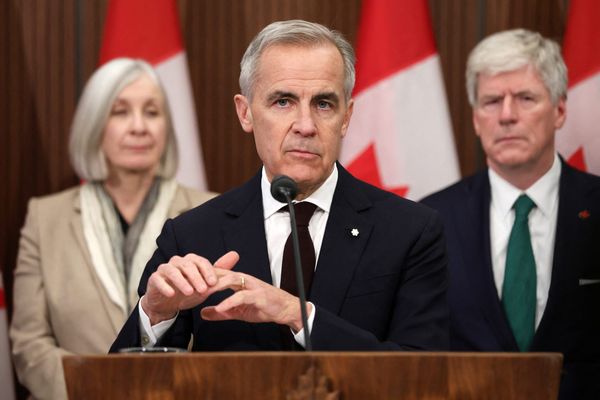
Living on the third floor in a 1920s art deco apartment in St Kilda, we rely solely on a ceiling fan without air conditioning, as tenants in this building have done for over a century.
We’ve resisted getting air-con installed, partly out of a dislike of artificial “dry air” but also as a tangible way to save energy and keep power bills down in summer.
But in homes equipped with both fans and air-con, the practice of fan-first cooling has been gaining popularity. Fan-first cooling is a strategy for staying cool and keeping energy costs down. It involves relying on electric fans most of the time, reserving air conditioning for hotter days and heatwaves.
On a global scale, sustainable cooling – using passive design, maximising fan use, energy efficiency and alternative refrigerants – could cut emissions by 64% by 2050, a new report from the United Nations Environment Programme finds.
Here’s how to maximise the savings without risking your health.
Keeping cool as the planet heats up
As summer temperatures rise so do indoor health risks, especially to the elderly, young children or people with cardiovascular conditions. Globally, heat-related deaths are estimated to have reached close to 500,000 annually by 2019, a number that is increasing as climate impacts worsen.
However, with power prices and carbon emissions at the forefront of many people’s minds, electric fans use as little as 3% of the energy used by air conditioning. In the Australian context, a recent paper in the Medical Journal of Australia (MJA) found that fan‐first cooling could reduce electricity demand and greenhouse gas emissions from air conditioning by more than 70% throughout a typical year.
But that doesn’t mean there isn’t a place for air conditioners. The problem with relying solely on fans for cooling, according to the MJA study, is that, once temperatures get too hot and dry, fans can worsen heat strain as the body cannot produce enough sweat to cool itself and the fan can start to push more heat into the body.
A recent University of Sydney crossover trial tested the extent to which dehydration affected the core temperature of 20 participants during three hours of 39C exposure with high humidity. It found that participants’ core temperatures were two times greater when dehydrated but that fan use actually worsened heart rate increases and increased sweat loss by 60%.
Thermal temperature is about much more than just air temperature, says Jenny Edwards, director and scientist at Light House ArchiScience and cofounder of the FixIt Chicks.
“A fan on high speed can make the perceived temperature 4C cooler,” she says. “The type of cool feeling from a ceiling fan is different, and many would describe as gentler and nicer, than the direct blast of cold air from an air conditioner.”
Edwards says that, in her experience as an architect, ceiling fans can significantly delay or replace the need for people reaching for the AC remote control at all.
“We love reverse cycle AC technology for those really intense and prolonged hot periods because it is super efficient,” she says. “But if you use fans first, and then continue to use them in combo with your AC, you’ll find you are much less reliant on it and can set the AC at a higher temp. Many of our clients find they only need AC during genuine heatwaves with consecutive days over 40C.”
When to switch on the air-con
Electric fans can generally be used as a first option up to 27C but that will vary depending on personal preference and the comfort of your home.
Fans can safely be used in combination with other measures in indoor temperatures up to 37C, then it’s best to opt for alternative cooling strategies such as sealing windows with blinds down, wetting the skin, reverting solely to air-con, or visiting an air conditioned local library or shopping centre.
Heat-related illness can be serious. On hot days, remember to keep a careful watch on symptoms of heat exhaustion such as cool, clammy skin, excessive sweating or thirst, headache, muscle cramps and dizziness. Heatstroke can be life-threatening. Its signs include very high body temperature, fast breathing or pulse, signs of confusion or slurred speech.
The University of Sydney’s HeatWatch forecasts heat health risks and offers tips for staying cool.
The ‘great forgetting’ – why isn’t fan-first cooling more popular?
If the age-old method of fan cooling is so much cheaper and less energy intensive, why isn’t it the norm?
Edwards says there has been a “great forgetting” of the most simple home cooling strategies and many modern Australian homes are being designed with too much unshaded glass that makes them susceptible to overheating. On top of that, air conditioning has been normalised in public buildings and public health campaigns haven’t generally advocated for fan-first cooling.
Tim Forcey, author of My Efficient Electric Home Handbook, says fans should certainly be used in the first instance for home cooling but that doesn’t mean there isn’t an essential place for air conditioners, especially in light of the federal government’s offer of free electricity during the day.
“Don’t wait until the peak time of 5pm to turn on the air-con – especially now that Chris Bowen is now giving away three hours of free electricity during the day. So use it to pre-cool the house if you need to.”
Forcey says that air-con should be used in conjunction with other household cooling methods including obvious things such as closing the blinds on hot days, using shading products such as reflective foil and properly insulating your home.
“Yes – use fans first to try to keep cool. But don’t be stingy with air-con usage if you need it – we still have 78-year-olds in Australia prematurely dying from heat morbidity.”
In the meantime, in our St Kilda apartment we’ll keep relying on our old school ceiling fans while keeping hydrated, with our shading blinds always down, as summer kicks in – at least until it becomes unbearable.







